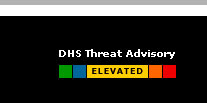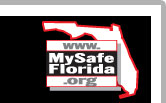




Basic Preparedness GuideGet Informed Learn about the hazards that may strike your community, the risks you face from these hazards, and your community’s plans for warning and evacuation. You can obtain this information from your local emergency management office or your local chapter of the American Red Cross. Hazards Ask local authorities about each possible hazard or emergency and use the worksheet that follows to record your findings and suggestions for reducing your family’s risk.
Warning Systems and Signals The Emergency Alert System (EAS) can address the entire nation on very short notice in case of a grave threat or national emergency. Ask if your local radio and TV stations participate in the EAS. National Oceanic & Atmospheric Administration (NOAA) Weather Radio (NWR) is a nationwide network of radio stations broadcasting continuous weather information directly from a nearby National Weather Service office to specially configured NOAA weather radio receivers. Determine if NOAA Weather Radio is available where you live. If so, consider purchasing a NOAA weather radio receiver. Ask local authorities about methods used to warn your community.
Evacuating Yourself and Your Family When community evacuations become necessary, local officials provide information to the public through the media. In some circumstances, other warning methods, such as sirens or telephone calls, also are used. Additionally, there may be circumstances under which you and your family feel threatened or endangered and you need to leave your home, school, or workplace to avoid these situations. The amount of time you have to leave will depend on the hazard. If the event is a weather condition, such as a hurricane that can be monitored, you might have a day or two to get ready. However, many disasters allow no time for people to gather even the most basic necessities, which is why planning ahead is essential.Ask local authorities about emergency evacuation routes. Record your specific evacuation route directions. Evacuation Guidelines
Community and Other Plans Ask local officials the following questions about your community's disaster/ emergency plans.Does my community have a plan? Can I obtain a copy? What does the plan contain? What should I know about the plan? What hazards does it cover? In addition to finding out about your community's plan, it is important that you know what plans are in place for your workplace and your children's school or day care center. 1. Ask your employer about workplace policies regarding disasters and emergencies, including understanding how you will be provided emergency and warning information. 2. Contact your children's school or day care center to discuss their disaster procedures. School Emergency Plans Know your children’s school emergency plan:• Ask how the school will communicate with the families during a crisis. • Ask if the school stores adequate food, water, and other basic supplies supplies. • Find out if the school is prepared to shelter-in-place if need be, and where they plan to go if they must get away. In cases where schools institute procedures to shelter-in-place-place, you may not be permitted to drive to the school to pick up your children. Even if you go to the school, the doors will likely be locked to keep your children safe. Monitor local media outlets for announcements about changes in school openings and closings and follow the directions of local emergency officials. For more information on developing emergency preparedness plans for schools, please log on to the U.S. Department of Education at www.ed.go.gov/emergencyplan. Workplace Plans If you are an employer, make sure your workplace has a building evacuation plan that is regularly practiced.• Take a critical look at your heating, ventilation and air conditioning system to determine if it is secure or if it could feasibly be upgraded to better filter potential contaminants, and be sure you know how to turn it off if you need to. • Think about what to do if your employees can’t go home. • Make sure you have appropriate supplies on hand.
|